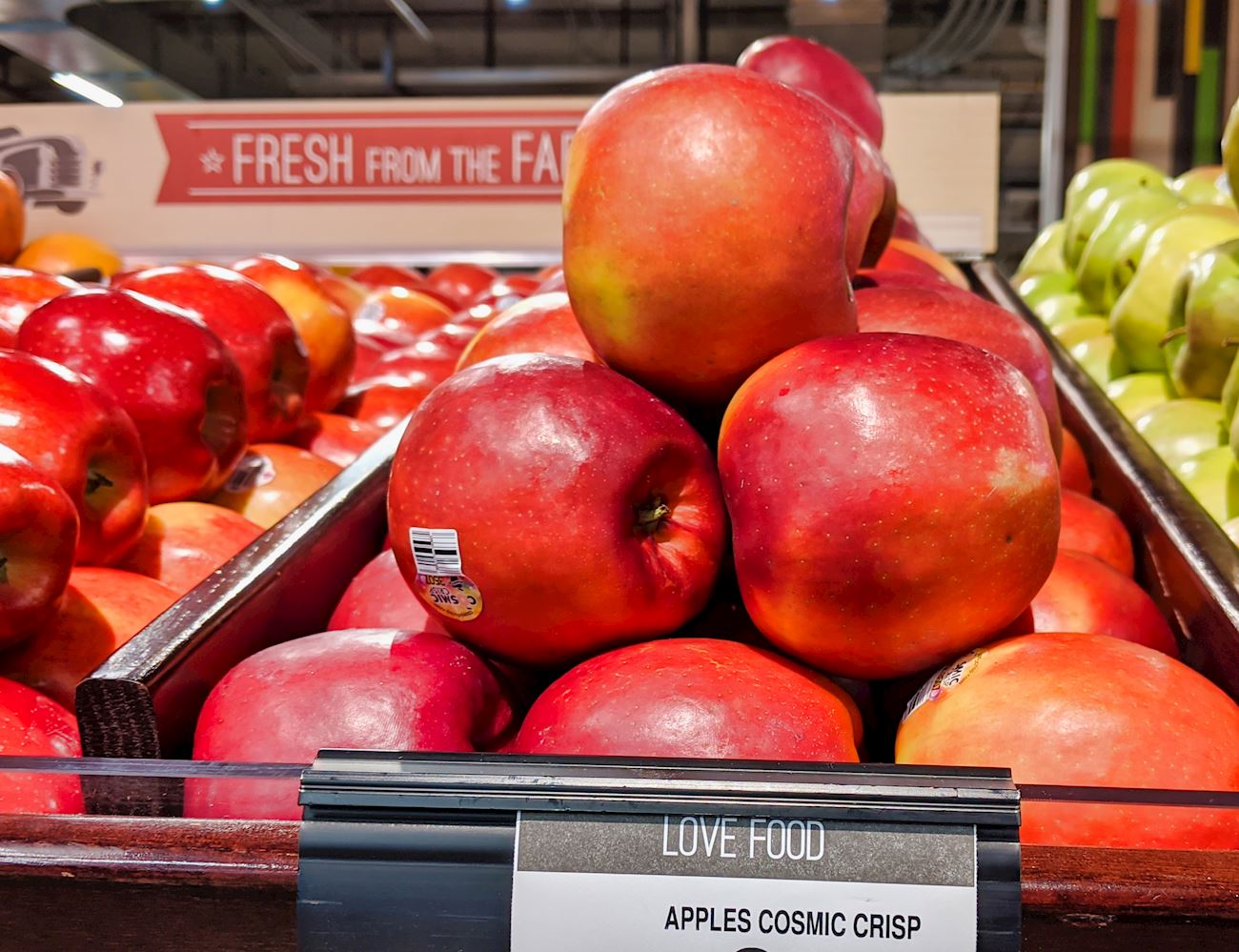Best Western American Pome Fruit Types
Idared is an apple variety that was first developed in Idaho. It's a cross between the Jonathan and Wagener breeds. The apples are medium-sized with a bright red and green-red color. The flesh is juicy, crisp, and firm, while the flavors are sweet, tart, aromatic, and refreshing.
Available from fall through early summer, Idared apples are great for cooking and baking because they hold their shape very well. They can also be eaten raw, added to salads, or paired with strong blue cheese.
Cosmic Crisp (known to experts as WA 38) is an American apple variety that's a cross between Honeycrisp and Enterprise. Grown in Washington State orchards, the apples are large, red, crunchy, juicy, acidic, and sweet.
They can be eaten as they are or baked. These apples ripen more uniformly than other apple varieties, and once picked, they even brown more slowly than the other apples. Another key factor is their lengthy shelf life – apparently, Cosmic Crisp apples can stay fresh in the fridge for up to a year!
Cameo is an apple variety originating from Dryden, Washington, when it was discovered in 1987 by the Caudle family. It is believed that these apples are a cross between Red Delicious and Golden Delicious, but the parentage is still uncertain.
The apples are covered in red strips and the skin is thin and delicate. The flesh is creamy and dense, with a juicy and crisp texture. The flavor is sweet and tart with notes of citrus and honey. Available from late fall through early spring, Cameo apples are typically used in sweet and savory dishes such as cobblers, quiches, sandwiches, and salads.
Hawaii is an American apple variety that was introduced as a cross between Gravenstein and Golden Delicious in Sebastopol, California around 1945. The apples are large and round, and their clear yellow skin is waxy to the touch. Beneath the skin, the texture of the flesh is crisp.
These apples have a distinctive pineapple flavor, and when grown in western regions, they become exceptionally sweet. Hawaii apples ripen in late fall, and it’s recommended to use them in desserts and baked dishes.
Pink Pearl is an American apple variety that was developed in Eureka, California as a seedling of Surprise, which is one of its parents. The apples date back to 1944 when they were introduced to the market by Albert Etter, a plant breeder.
The apples are medium-sized with a creamy, pale green skin that bruises easily. Beneath it, the texture of the unusually pink flesh is crisp and fine-grained. The flavors are balanced between sweet and tart, but they vary with the seasons and the climate.
Waltana is an American apple variety originating from California and dating back to around 1860. It’s believed that these apples are a seedling of Wagener with Manx Codlin as the pollen parent. The apples are medium to large in size and the skin is greenish-yellow with thin red stripes.
Beneath it, the texture of the flesh is crisp and dense, while the flavor is tart, but it varies from one apple to another. Waltana apples ripen in late fall and it’s recommended to use them for making cider, in desserts, and baking. Interestingly, these apples are thought to be the best winter storage apples due to their long shelf life.
Criterion is an American apple variety that’s been discovered near Parker, Washington. The apples are a cross between Red Delicious, Yellow Delicious, and Winter Banana, and they’ve been introduced to the market in 1973. The texture of the flesh is firm, juicy, and crisp.
The aromas are pleasant, while the flavors are mild, sweet, and slightly tart. These apples are harvested in October and they keep for a few months after they’ve been picked. It’s recommended to use Criterions as all-purpose apples - in baking, cooking, and drying.
TasteAtlas food rankings are based on the ratings of the TasteAtlas audience, with a series of mechanisms that recognize real users and that ignore bot, nationalist or local patriotic ratings, and give additional value to the ratings of users that the system recognizes as knowledgeable. TasteAtlas Rankings should not be seen as the final global conclusion about food. Their purpose is to promote excellent local foods, instill pride in traditional dishes, and arouse curiosity about dishes you haven’t tried.


